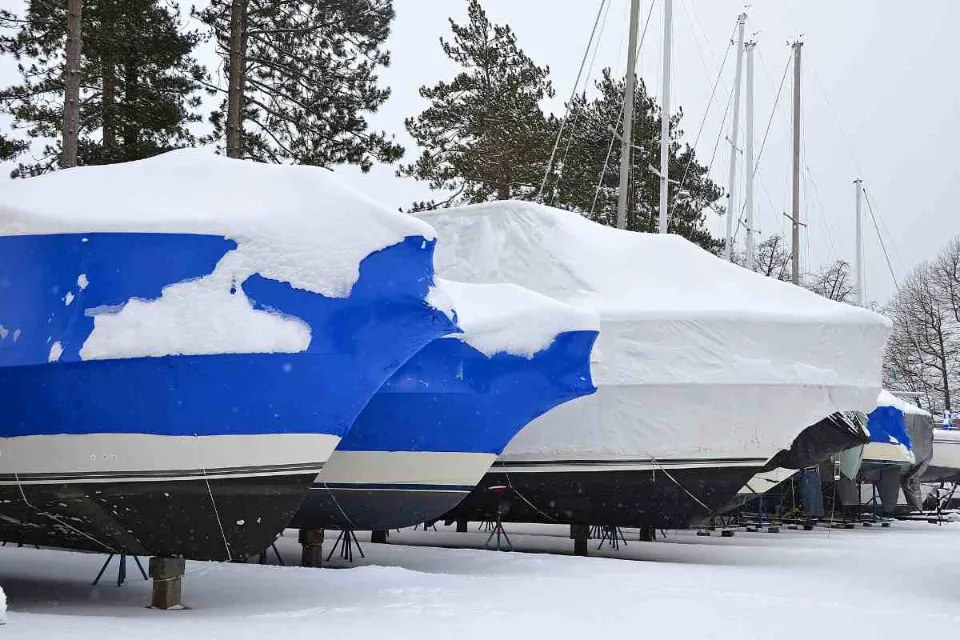This article will teach you how to shrink-wrap a pontoon boat so you can save money by doing it yourself.
Pontoon boats can be safely stored during the cold months by shrink-wrapping them. The best water protection is provided by this because it fits the boat tightly. For the winter storage method to work best, the shrink wrap must be installed correctly.
You can learn how to shrink-wrap a pontoon boat by reading this blog.
How to Shrink-wrap a Pontoon Boat?
What You Will Need
To shrink-wrap a pontoon boat, you’ll need the following installation accessories:
- Strapping
- Ring cutter to cut strapping
- Strap tensioning tool
- Plastic caps
- Wood
- Super caps
- Belly band
- Staple gun
- Buckles
- Adhesive spray
- A roll of shrink wrap
- Heat tool
- Protective gloves
Once you have your shrink-wrap kit and the required equipment ready, follow these steps to wrap your boat:
Step 1: Prepare the Pontoon Boat for Storage
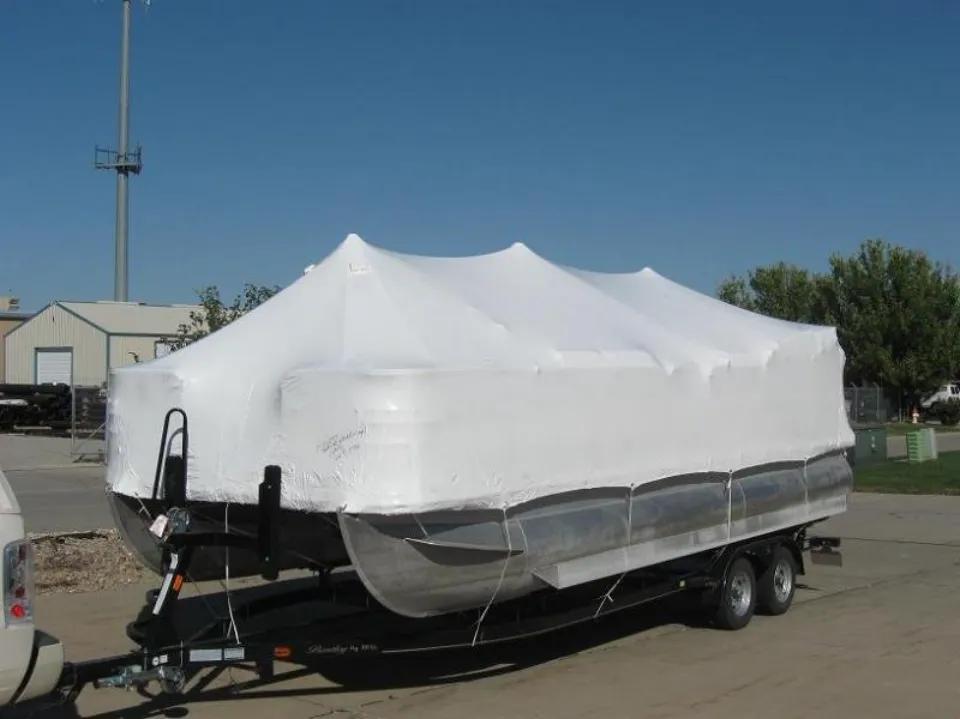
Remove all of the loose equipment, including flotation devices and fishing gear, before shrink-wrapping your pontoon boat. After that, thoroughly clean your boat because leaving any trash or food crumbs in your pontoon will invite pest infestations.
Drain all water lines, including the drinking water and toilet lines, once the boat has been thoroughly cleaned. Plumbing will be harmed if water is left in the pipes because it expands when it freezes. To make sure they are in good working order come spring, you should winterize your battery and fuel tank.
The Bimini needs to be deployed and laid flat, which is another crucial step in getting your pontoon boat ready for winter storage.
Step 2: Establish a Support System
Take a height measurement of the boat while the Bimini top is flat. Usually, the laid Bimini or the top of the console windshield is used. To determine how tall the support poles should be, multiply the height of the top end by approximately 12 to 18 inches.
Build the support poles using a plastic top and bottom cap once you have the height. You must create a post for every 8 feet of your pontoon boat’s length when building the vertical supports.
Prior to erecting the strapping structure with the boat’s railings serving as your anchor points, cut the support posts to the proper length and secure the top and bottom.
The strapping should be pulled as tightly as possible before being stapled into the plastic tops of the posts once you have created a sturdy framework for covering your boat.
Once the strapping is secure, bind from the front and back of the boat until a tent-like shape is created. For the front and back strapping, use the buckle to fasten them, and then shrink-wrap the whole thing.
If your boat has cleats on the stern, you can use them to create a V-pattern to tighten the strapping even more. The boat is now prepared for wrapping with a strong support frame.
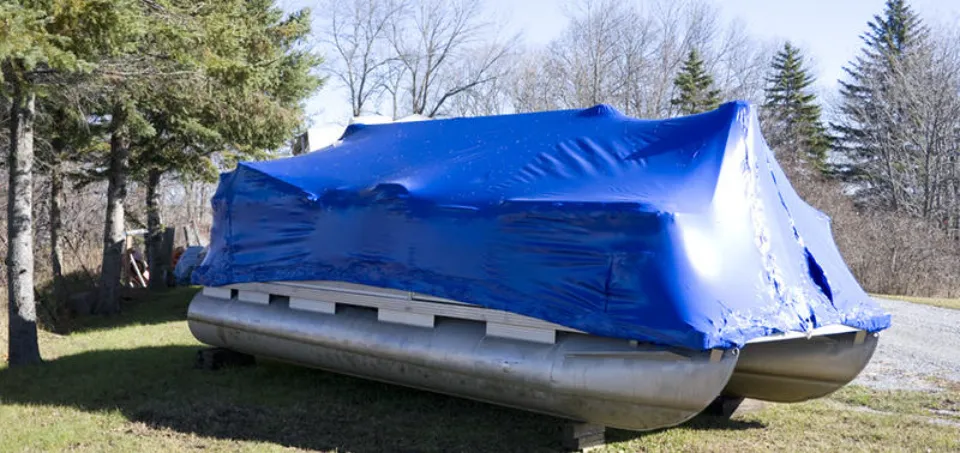
Step 3: Install the Shrink Wrap
Wrap the boat in shrink wrap by draping it over the support posts and strapping it backward from the stern. Use a disposable film knife to cut the shrink wrap hanging down over the boat’s trailer after it has completely covered your boat.
Place the belly band where the two tubes are mounted to the deck, under the boat’s hull. Install the buckle, then use the strap tensioning tool to attach the ends of the two bands and sufficiently tighten them.
Use a heat gun to shrink the wrap around the boat, and make sure to tie off the bottom with bands that run under the deck. Verify that the wrap is properly folded over the perimeter band before heating.
To safely achieve a tight seal when heating the shrink wrap in sections, use the bottom-up technique. When applying heat incorrectly, shrink wrap can burn and result in an open flame, so you’ll want to use caution around the fire.
Additionally, the flames could spill over onto other combustible materials in your boat and start a dangerous fire. Another helpful tip is to use a ladder to heat areas that are too high for you to see from the ground.
Step 4: Add Self-Adhesive Vents
For the purpose of preventing moisture buildup, add vents to the boat’s wrap. Four vents are the maximum number advised by the Dr. Shrink wrap kit. Add a zipper point if you need to access your boat’s interior in the winter.
Can You Shrink Wrap a Boat by Yourself?
With the aid of a DIY boat wrap kit, you can shrink-wrap a boat yourself. When your boat isn’t in use, this is a great way to keep it safe. Additionally, you can weatherize oddly shaped items like boats and RVs using shrink wrap.
Boats and other products are wrapped using heat shrink film by Pro-Tect. Transporting the containerized vessel or product will save time and money.
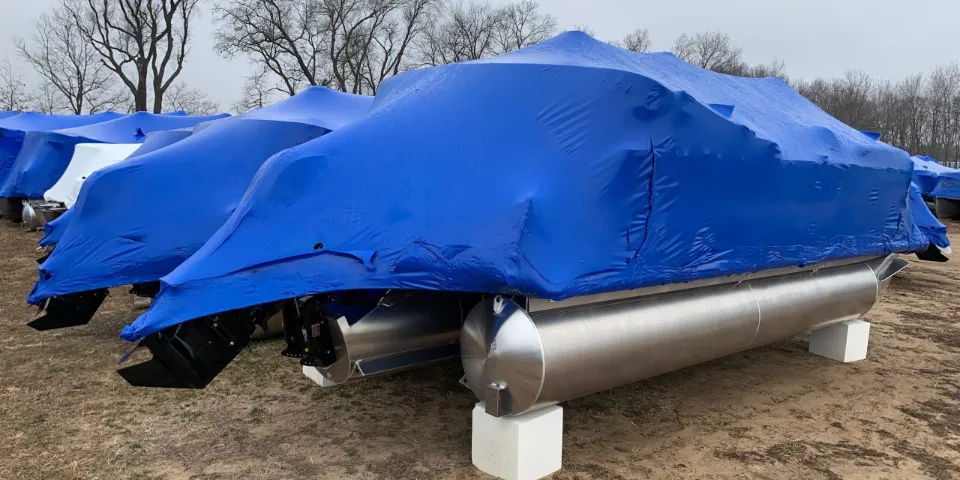
Utilizing the technique requires a heat gun. Boat shrink wrap is a great way to secure a boat even if it isn’t on the water during the winter because it can protect your boat during the off-season.
Additionally, marine shrink wrap offers the best defense against the weather, pests, and bird droppings. Marine shrink wrap can be heated without the need for propane.
In the event that it rains where you live, heat shrink vents might be a better alternative to marine vinyl wraps film because of their design, which makes them less prone to becoming wet or soaked.
Should You Shrink Wrap Your Boat?
Choosing whether or not to shrink-wrap your boat requires careful consideration of a number of different aspects. You must first ask yourself, “How much is my boat worth?”
Even if you choose to shrink-wrap your boat, keep in mind that it is an expensive option. Additionally, installation calls for specialized equipment and insurance, both of which may be challenging for the average person to obtain.
However, DIY kits are a well-liked choice for people who want to install their shrink-wrap but do not have the insurance necessary to hire installation services. Heat shrink wrap might be the solution if you’re looking for a more affordable way to protect your boat, even though it isn’t as effective as some of the other options.
The majority of people opt for the old tarp because wrapping a boat requires complexity and can take a lot of time. It’s important to keep in mind, though, that heat shrink wrap won’t last forever and will eventually need to be replaced or redone. It will aid in preventing damage to your boat during transport or in windy conditions.
How Long Does a Pontoon Wrap Last?
Pontoon wraps are an excellent winter boat protection option. They will protect your boat from wind, ice, and snow damage. Pontoon wraps ought to last seven years.
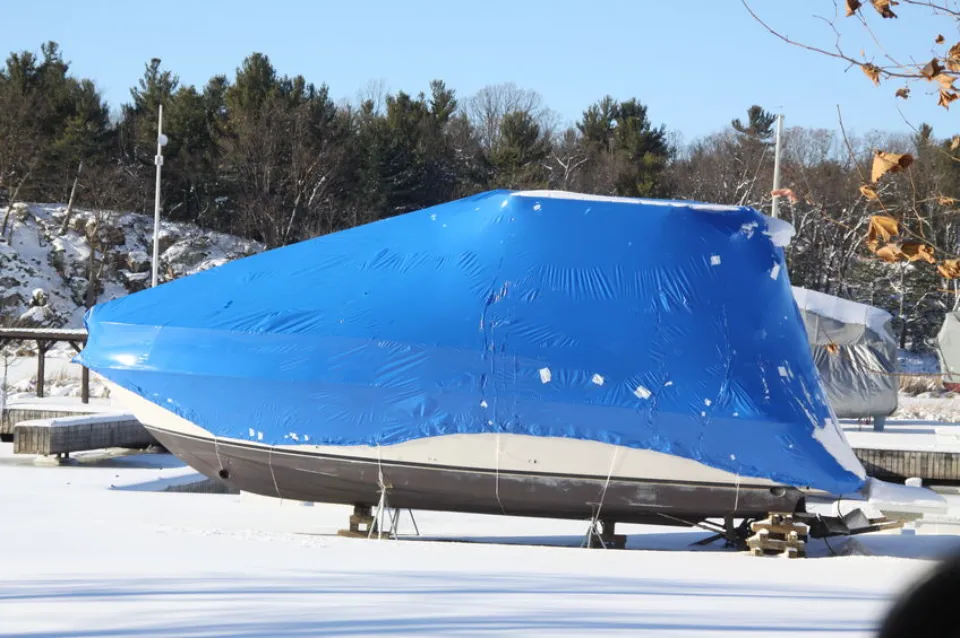
A shrink wrap, however, usually only lasts for six months. This is so because a pontoon wrap is constructed of a thicker material than a shrink wrap. To prevent damage to the pontoon wrap, it is crucial to ensure that you fold it correctly.
What is Shrink-Wrapping?
When heated, a specific kind of film called shrink-wrap contracts and adheres to objects. When shipping, storing, or displaying products, it is frequently used to protect the goods. Additionally, the polyethylene, PVC, and polypropylene used in shrink-wrap are frequently materials approved for use in food and can be printed with logos or other patterns.
A hairdryer or heat gun can be used to manually shrink-wrap items. You can buy pre-cut sheets and rolls.
Before it gets chilly and wintery outside, late October or early November is the ideal time to shrink-wrap your pontoon boat. In case of extreme weather, you can use this time to store your boat indoors or in a garage.
Why is Shrink Wrap Necessary?
On a boat, shrink wrap has a number of advantages. It primarily aids in preventing damage to the paint job or gel coat. Making it more challenging for thieves to access the boat can also help prevent theft.
Additionally, shrink wrap can offer security in conditions that include strong winds, rain, snow, and mud. Shrink wrap can also be used for storage by boat owners, but it is frequently used for transportation.
Shrink wrapping your boat can improve its appearance if you plan to sell it. When being transported to the home of a new owner, it will shield the boat from dings and damage. Considering the value of a boat, the cost of marine shrink wrap is negligible.
What is the Material Used to Shrink Wrap Boats?
A plastic film is used to shrink-wrap boats to protect their exterior surfaces. This is being done with the hope that it will aid in protecting against UV rays, dirt, and other environmental factors.
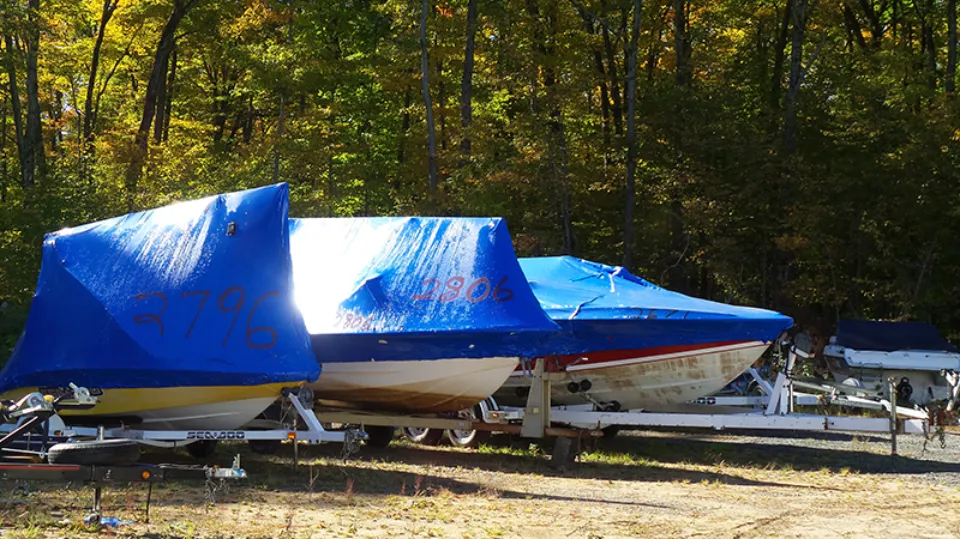
Typically, PVC plastic, which can be purchased in rolls and cut to size at a hardware store, is used to shrink-wrap boats. All of the film’s thicknesses, though they range, are expressed in mils. The more protection the plastic provides against the elements, the thicker it is.
Pros of Shrink Wrap
Some pros of shrink wrapping for the winter include:
- Offers the best waterproof defense. Plastic naturally resists water, so it doesn’t require any additional treatments. Unlike tarps, which can only be tied and fixed in place, it shrinks tightly. Canvas covers frequently have more breaks to go around stanchions and hardware, which can be leak points.
- The buildup of precipitation is avoided by good installation. To prevent snow and ice from building up, framing wrapped in shrink wrap can be positioned at a high angle. The plastic’s slickness also slows down the accumulation of ice and snow. With tarp and canvas covers, you shouldn’t experience puddles or snow accumulation.
- All of the boats are covered. Most shrink-wrap installations cover the entire boat, overlapping the top of the hull and encasing the stanchions. Many canvases covers leave holes for stanchions or stops at the cap rails, all of which allow more moisture,
- When properly constructed, very stable. Shrink wrap covers that are supported, framed, and tied offer excellent protection from wind, rain, and snow.
- Every year may be altered. Every year when wrapping your boat, you can use a different configuration based on your requirements and expectations. Organizing teak work for the upcoming winter? So that you can stand, build the frame higher. This winter, will you be wet rather than dry storing? For different access from the dock, place the zipper door on the side that is facing the dock rather than the stern.
- Smaller upfront cost. Shrinkwrapping is less expensive yearly than buying a permanent boat cover. However, if you don’t have the money right away or don’t plan to keep the boat long enough to recoup the cost of a canvas cover, this makes sense. The cost is offset by the expense that must be incurred every year.
Cons of Shrink Wrap
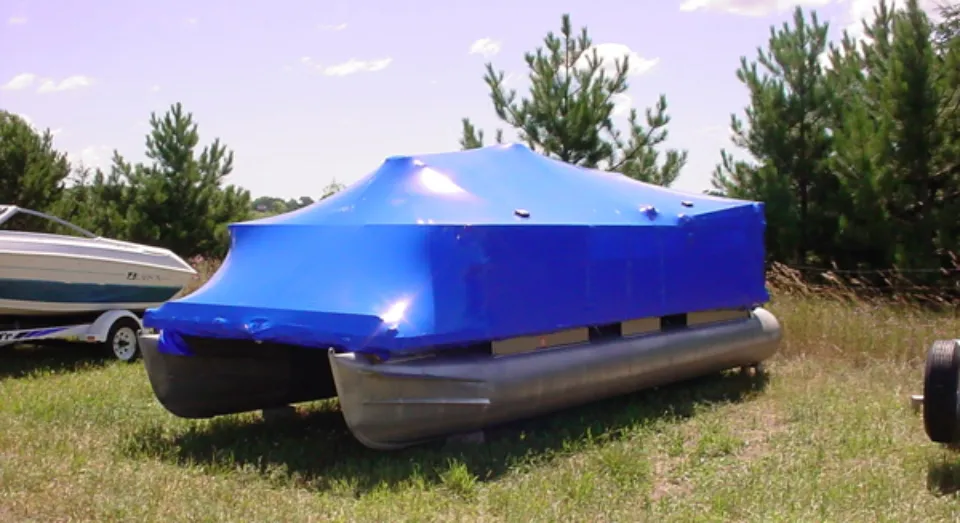
Shrink wrapping has some significant drawbacks. The majority of risks and drawbacks of shrinkage are brought on by improper installation, and many of the disadvantages can be reduced with proper installation. One disadvantage of proper installation is its increased cost.
- It is an expensive annual expense. Shrink-wrapping your boat yearly will end up costing more than purchasing a custom cover over time. While a permanent cover is expensive up front, you won’t have to pay to cover your boat for the next ten years. Over the course of the cover’s life, the average cost will be significantly lower.
- Employing experts is probably a good idea. You can save a lot of money if you already have the knowledge and resources. However, it’s a difficult task, and if you get it wrong, you’ll regret it after the first wind or snowstorm. A professional team can cover several boats per day during decommissioning season while you can only cover one boat per year because they are skilled at creating a tight, durable cover. You’ll be working in a crowded boatyard with flammable materials and a heat gun that runs on propane. It’s not something that the majority of boat owners take on themselves.
- The issue of ventilation exists. Mold and mildew are brought on by trapped moisture, and polyethylene prevents airflow. Vents must be set up so there is enough airflow to prevent mildew and that they don’t leak.
- Access costs extra. To work on the boat, you must install zipped doors, so you must make preparations in advance. The doors are more expensive to purchase and have installed, but if you remove them carefully, you can often repurpose them. Some installers will give you credit if you return the spring-installed doors undamaged.
- Shrinkwrapping is not necessary for all boats. Shrink wrap can chafe and harm hulls with painted finishes like Awlgrip. You can shrink-wrap them, but you cannot allow the wrap to cover the hull. Thus, the benefits of a seal that overlaps the hull and deck joint are lost.
- Long-Term Layup. Shrink wrap might not perform as well if stored for an extended period of time—more than a season. Shrink wrap needs to be monitored and may need to be replaced if there’s a chance that your layoff will last longer than one winter. Although UV resistance exists in polyethylene, prolonged sun exposure can still have negative effects.
- Aspects of the environment. Mountains of plastic waste are produced each spring by shrink wrap. It can be recycled, but doing so frequently requires a little extra work and expense.
Final Thoughts: Shrink Wrap a Pontoon Boat
Pontoon boats can be well-protected over the winter by being shrink-wrapped. The boat is fully protected from winter weather-related damage thanks to this. As the wrap eliminates moisture to keep the boat dry throughout the winter, you won’t have to worry about mildew issues.
Do not shrink the cover if the wind speed exceeds 10 miles per hour! Always use ladders that are tall enough to allow you to see the surface you are shrinking.
FAQs
How Much Does It Cost to Shrink Wrap a Pontoon Boat?
It costs money to shrink-wrap your boat for the winter. Professional boat shrink wrappers calculate the final cost based on the size of the boat. When you have the boat covered by a professional, you should plan on spending $12-25 per square foot. If you do the work yourself, you can make small financial savings.
Is It Hard to Shrink Wrap a Boat?
Even if you have everything you need to get started, it can still take some practice to get the hang of using the heat gun and shrinking the wrap to the proper sealing tension. If done correctly, you can leave your boat shrink-wrapped for the winter without any issues, but it can be challenging to do correctly.
Do You Need Vents in Boat Shrink Wrap?
It is imperative that every shrink wrap cover be properly ventilated to eliminate moisture, mildew, and condensation from forming under the cover. The number of vents to use will change depending on the size of the boat.

